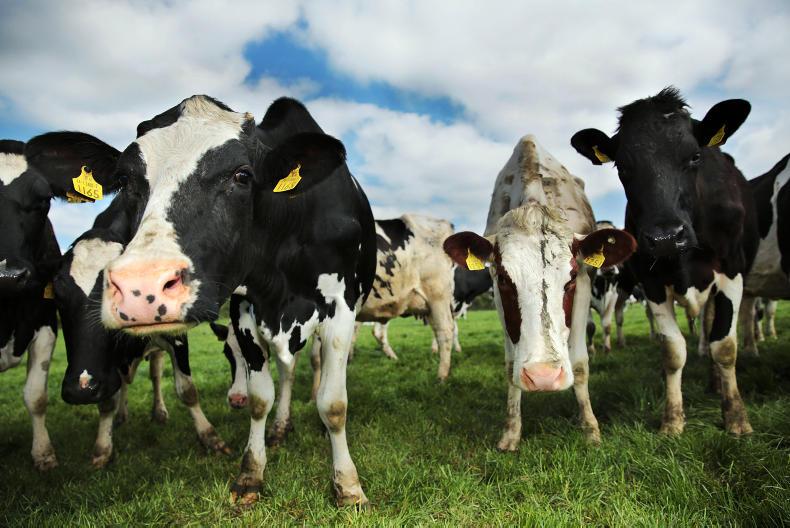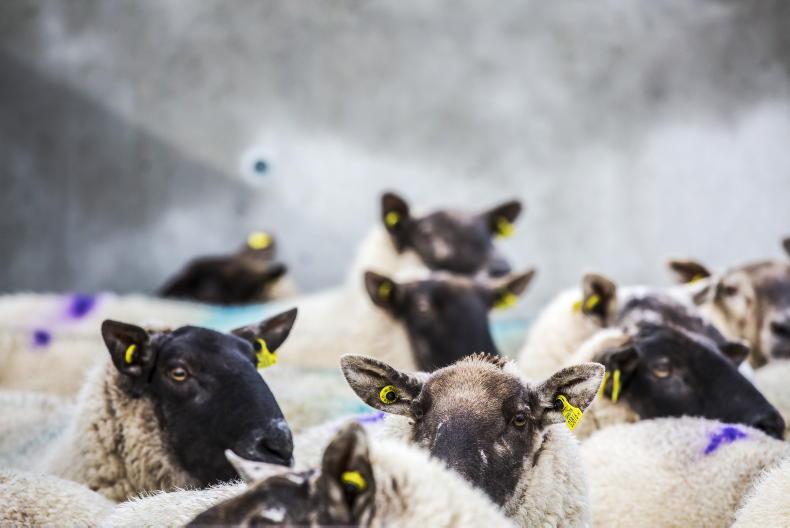Each year brings fresh challenges to us all, some we can influence and some we cannot.
Coronavirus definitely falls into the latter category, however, the welfare of livestock, finance and family commitments and the importance of milk production to our local economy means that the daily farm routine continues, despite the health emergency.
In the current trading environment, where milk price is falling and many input costs are increasing, there is much discussion about break-even milk price and the need for greater efficiency.
Break-even milk price is the figure a farm needs in order to maintain its current account/creditor balance from year to year, while meeting its commitments, paying tax and drawing a wage from the business (reinvestment, sometimes shown as depreciation, is another aspect which should be considered alongside this figure).
The calculation we have produced is for a given milk yield and herd size for a particular unit. Of course, every farm will be different, but our aim is simply to highlight the realities of dairy farming in Northern Ireland (NI) at present, using a set of reasonable assumptions based on real data.
Over the years, the break-even milk price has shown a steady increase, but unfortunately this has not been matched with an increase in the milk price paid to producers.
The table below shows costs on a typical NI dairy farm – 95 cows, 7,600l/cow (from 2.6t meal), 25% herd replacement rate and a stocking rate of around 2 - 2.2 LU/ha.
The costs reflect average amounts being paid currently, and the drawings figure, finance commitments and tax shown are typical for a farm business of this size.
The milk price paid to Drumlin Farm is 23p/l – this mirrors what many local producers have received this month for April milk.
When all costs (variable and fixed) are paid, along with drawings, tax and finance (farm borrowed at £1,500 – £2,000/cow), a milk price of 23p/l brings a significant cash shortfall.
The break-even price is at 27.5p/l, and if the single farm payment is removed, it is 30p/l.
This figure does not include any reinvestment in the business, and is based on modest drawings of £28,000 to cover family living expenses.
Annual expenditure on the likes of machinery and equipment is also modest. For example, a figure of £11,000 to cover red diesel, parts, tyres, servicing, parlour maintenance and cars can hardly be described as extravagant.
Other than cows and replacement heifers, Drumlin Farm has no other enterprises – the business has no off-farm income and depends entirely on the monthly milk cheque.
Predicament
This example highlights the predicament that many local farms find themselves in – they are told to become more efficient, however the reducing margin means that they must also ‘scale up’ their farm business if they are to meet their financial commitments.
The cost of automation and labour, combined with statutory requirements for cross compliance and quality assurance, means that a cash deficit is a reality for the majority of local dairy farmers.
The average annual milk price received in the last year is 26 – 27p/l (and falling), while the average break-even is 27 –28p/l (and rising).
Not sustainable
Increasing farm borrowing and/or extending creditor balances are not long-term solutions to a cash deficit –the current economic regime is therefore not sustainable.
While the solution includes improved efficiency and scale for dairy farmers, it must also include improved efficiency by processors and higher food prices to consumers, especially if single farm payment is to be gradually phased out.
Given the ‘essential worker’ status of our farmers, and the importance of food security (particularly given Brexit changes), should we not be asking the wider population to pay more for dairy products?
Read more
£25m support for dairy and beef sectors
NI co-ops cut base prices for April
Each year brings fresh challenges to us all, some we can influence and some we cannot.
Coronavirus definitely falls into the latter category, however, the welfare of livestock, finance and family commitments and the importance of milk production to our local economy means that the daily farm routine continues, despite the health emergency.
In the current trading environment, where milk price is falling and many input costs are increasing, there is much discussion about break-even milk price and the need for greater efficiency.
Break-even milk price is the figure a farm needs in order to maintain its current account/creditor balance from year to year, while meeting its commitments, paying tax and drawing a wage from the business (reinvestment, sometimes shown as depreciation, is another aspect which should be considered alongside this figure).
The calculation we have produced is for a given milk yield and herd size for a particular unit. Of course, every farm will be different, but our aim is simply to highlight the realities of dairy farming in Northern Ireland (NI) at present, using a set of reasonable assumptions based on real data.
Over the years, the break-even milk price has shown a steady increase, but unfortunately this has not been matched with an increase in the milk price paid to producers.
The table below shows costs on a typical NI dairy farm – 95 cows, 7,600l/cow (from 2.6t meal), 25% herd replacement rate and a stocking rate of around 2 - 2.2 LU/ha.
The costs reflect average amounts being paid currently, and the drawings figure, finance commitments and tax shown are typical for a farm business of this size.
The milk price paid to Drumlin Farm is 23p/l – this mirrors what many local producers have received this month for April milk.
When all costs (variable and fixed) are paid, along with drawings, tax and finance (farm borrowed at £1,500 – £2,000/cow), a milk price of 23p/l brings a significant cash shortfall.
The break-even price is at 27.5p/l, and if the single farm payment is removed, it is 30p/l.
This figure does not include any reinvestment in the business, and is based on modest drawings of £28,000 to cover family living expenses.
Annual expenditure on the likes of machinery and equipment is also modest. For example, a figure of £11,000 to cover red diesel, parts, tyres, servicing, parlour maintenance and cars can hardly be described as extravagant.
Other than cows and replacement heifers, Drumlin Farm has no other enterprises – the business has no off-farm income and depends entirely on the monthly milk cheque.
Predicament
This example highlights the predicament that many local farms find themselves in – they are told to become more efficient, however the reducing margin means that they must also ‘scale up’ their farm business if they are to meet their financial commitments.
The cost of automation and labour, combined with statutory requirements for cross compliance and quality assurance, means that a cash deficit is a reality for the majority of local dairy farmers.
The average annual milk price received in the last year is 26 – 27p/l (and falling), while the average break-even is 27 –28p/l (and rising).
Not sustainable
Increasing farm borrowing and/or extending creditor balances are not long-term solutions to a cash deficit –the current economic regime is therefore not sustainable.
While the solution includes improved efficiency and scale for dairy farmers, it must also include improved efficiency by processors and higher food prices to consumers, especially if single farm payment is to be gradually phased out.
Given the ‘essential worker’ status of our farmers, and the importance of food security (particularly given Brexit changes), should we not be asking the wider population to pay more for dairy products?
Read more
£25m support for dairy and beef sectors
NI co-ops cut base prices for April









SHARING OPTIONS